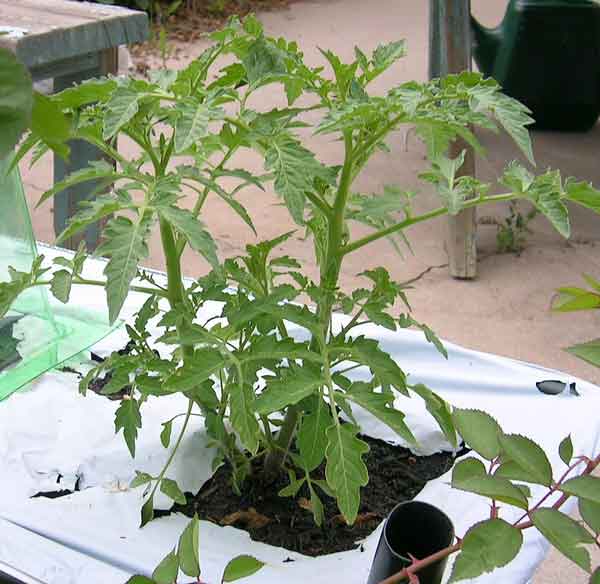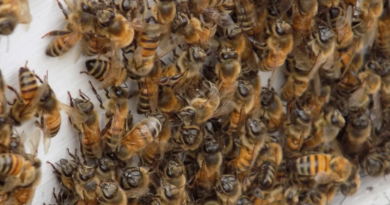Raised Bed Gardening in St Louis: A Comprehensive Guide
Hey there, gardening enthusiasts! Are you ready to take your green thumb to new heights? Well, it’s time to dive into the wonderful world of raised bed gardening. In this comprehensive guide, we’ll explore the ins and outs of raised bed gardens and why they’re all the rage. From the incredible benefits they provide to the nitty-gritty of building your own, we’ve got you covered. So, let’s get down to the (elevated) dirt! 🥕
Why Raised Bed Gardens are the Bee’s Knees – The Elevated Garden Craze Explained
Okay, folks, let’s dig deeper into the buzz around raised bed gardens in St Louis. So, what makes these elevated beauties the garden world’s latest obsession? In a world full of gardening methods, raised beds stand tall – literally and figuratively. Let’s break down some of the standout reasons why gardeners are head over heels for raised bed gardens.
Drainage Dreams Come True
- Do you ever feel like your garden is more like a swamp than a fertile oasis? Well, fear not! Raised beds are here to save the day with their superior drainage capabilities. By lifting the soil above ground level, these garden superstars prevent water from pooling, which means your beloved plants won’t end up swimming for their lives.
Backaches Be Gone
- Picture this: You’re in your garden, tending to your plants, but instead of being hunched over like the Hunchback of Notre Dame, you’re standing tall and proud. Sounds heavenly, right? That’s the beauty of raised bed gardens. By elevating the garden bed, you can bid adieu to backaches and sore knees. Your spine will thank you.
The Ultimate Soil Control
- If you’ve ever felt like your soil is conspiring against you, it’s time to show it who’s boss. With raised bed gardens, you have complete control over the soil blend you use, allowing you to tailor the mix to your plants’ specific needs. Whether it’s a nutrient-rich concoction or the perfect pH balance, you’re in the driver’s seat. Victory is yours!
A Weed-Free Wonderland
- Do you ever feel like you’re playing an endless game of whack-a-mole with weeds? With raised beds, you can finally gain the upper hand. The elevated structure makes it more challenging for those pesky weeds to invade, saving you time and energy for the fun stuff – like planting and harvesting!
An Early Bird’s Delight 🐦
- Why wait around for Mother Nature in St Louis when you can kick-start the growing season yourself? Raised beds warm up more quickly in the spring, allowing you to get a jump on planting. So, grab your gardening gloves and get a head start on your neighbors. You’ll be the envy of the block when your garden is already flourishing while they’re still waiting for the ground to thaw.
Accessorize Your Garden
- Let’s not forget about the aesthetic appeal of raised bed gardens. They’re like garden accessories that can instantly elevate (pun intended) the look of your outdoor space. Whether you opt for sleek, modern designs or rustic, reclaimed materials, raised beds can become a stunning focal point in your landscape.
With all these irresistible benefits, it’s no wonder raised bed gardens in St Louis have become the bee’s knees in the gardening world. Give them a try, and you might just find yourself swooning over your elevated garden paradise.

Building Your Raised Bed Garden – It’s Easier Than You Think! – A Step-by-Step Guide to Your Elevated Eden
So, you’re ready to jump on the raised bed garden bandwagon, but you’re feeling a tad intimidated by the construction process? Fear not, my gardening friend! Building your own raised bed garden is easier than you think, and we’re here to walk you through the process. Get ready to channel your inner DIY guru and let’s create your elevated garden paradise!
Location, Location, Location – The Perfect Spot for Your Raised Bed
Before you start sawing and hammering, you need to scout out the ideal location for your raised bed garden. Keep these factors in mind:
- Sunshine galore: Aim for a spot that gets at least 6-8 hours of sunlight per day. Remember, more sun equals happier plants.
- Water access: Make sure the area is close to a water source, so you don’t end up lugging watering cans or stretching hoses across your yard.
- Smooth sailing: Choose a relatively flat area for easy construction and reduced soil erosion.
Material Matters – Choosing Your Raised Bed Frame Components
Next up, let’s talk materials. From rustic wood to trendy cinder blocks, there’s a wide range of options for your raised bed frame. When selecting your materials, consider these factors:
- Durability: Opt for materials that can withstand the elements and resist rot, like cedar, redwood, or even composite materials.
- Safety first: Avoid using treated wood or materials that could leach harmful chemicals into your soil. Keep it natural and non-toxic.
- Budget-friendly: Pick a material that suits your budget without sacrificing quality or style. After all, your raised bed should make you and your wallet happy.
Measuring Up – Determining Your Raised Bed Dimensions
With your materials in hand, it’s time to figure out the dimensions of your raised bed. Here are some tips:
- Width-wise: Keep the width around 4 feet to ensure easy access to your plants without having to perform acrobatics.
- Length-wise: Go for a length that suits your space and gardening goals. 8 feet is a popular choice, but don’t be afraid to think outside the box (or bed lol).
- Height-wise: Aim for a minimum height of 12 inches, but feel free to go higher if you want to save your back from bending.
Assembling Your Elevated Masterpiece – Putting It All Together
Now comes the fun part – assembling your raised bed frame! Follow these steps:
- Cut it out: Cut your materials to the desired dimensions, and make sure all pieces are level and even.
- Piece it together: Attach the frame pieces using screws, nails, or brackets. Ensure all connections are secure and stable.
- Double-check: Verify that your assembled frame is level and square. A wonky bed won’t do your plants (or your garden’s aesthetic) any favors.
Fill ‘er Up – Creating the Perfect Soil Environment
Your frame is complete, and now it’s time for the pièce de résistance – the soil! Here’s what you need to do:
- Mix it up: Combine topsoil, compost, and other organic materials to create a nutrient-rich soil blend tailored to your plants’ needs.
- Fill it up: Fill your raised bed with the soil mixture, ensuring even distribution and leaving some room at the top for mulch or other amendments.
And just like that, you’ve built your very own raised bed garden!

Planting and Nurturing Your Elevated Garden Oasis – A Green Thumb’s Guide to Raised Bed Success
Congratulations! You’ve built your raised bed garden, and now it’s time to bring your elevated St Louis oasis to life with an array of plants. So, roll up your sleeves and let’s dive into the world of planting and nurturing your raised bed garden. Trust us, your green thumb is about to shine brighter than ever!
Plant Selection – Pick Your Plant Pals Wisely 🍅
Your raised bed garden is like a blank canvas waiting for a masterpiece. But before you go plant-crazy, take a moment to consider which St Louis plant pals will suit your elevated paradise:
- Growing conditions: Choose plants that thrive in your region’s climate and soil conditions. You’ve got the power to control your soil mix, but Mother Nature still calls the shots on weather.
- Sun seekers vs. shade lovers: Be mindful of each plant’s sunlight preferences, and group them accordingly in your raised bed.
- Size matters: Pay attention to each plant’s mature size and growth habits to ensure they have ample room to grow and won’t crowd their neighbors.
Layout and Spacing – Give Your Plants Room to Breathe
When it comes to planting your raised bed, strategic spacing and layout are key. Keep these tips in mind to create a harmonious, thriving garden:
- Spacing: Follow the recommended spacing guidelines for each plant to ensure they have enough room to grow and access nutrients. A cramped garden is a sad garden.
- Arrangement: Place taller plants on the north side of your raised bed, and gradually decrease plant height as you move southward. This will ensure optimal sunlight exposure for all your plant pals.
- Companion planting: Consider incorporating companion planting techniques, which involve placing plants that benefit each other close together. This can help deter pests, boost soil nutrients, and promote overall plant health.
Watering and Feeding – Shower Your Plants with Love (and Nutrients)
To keep your raised bed garden looking lush and vibrant, proper watering and feeding are essential. Here’s how to keep your plants happy and well-nourished:
- Water wisely: Raised beds may require more frequent watering due to their improved drainage. Monitor your soil moisture levels and water as needed, aiming for a consistent, evenly moist soil.
- Feed me: Supplement your nutrient-rich soil mix with organic fertilizers and compost to provide your plants with the nourishment they need to flourish.
- Mulch magic: Spread a layer of organic mulch around your plants to help retain moisture, regulate soil temperature, and suppress weeds. Your plants will thank you for the extra TLC.
Pest Control and Disease Management – Keeping the Bad Guys at Bay
Your raised bed may be elevated, but it’s not immune to pesky pests and diseases. Here’s how to protect your garden oasis:
- Inspect and protect: Regularly check your plants for signs of pests or diseases, and take action as soon as you spot trouble. Early intervention in St Louis is the key to keeping your garden healthy.
- Natural defenders: Utilize organic pest control methods, such as introducing beneficial insects, using insecticdal soaps, or applying neem oil. Keep chemicals at bay and let nature do its thing.
- Prevent and conquer: Practice good garden hygiene by promptly removing dead or diseased plant material and avoiding overhead watering. An ounce of prevention is worth a pound of cure, as they say.
With these tips in your gardening arsenal, you’ll be well on your way to planting and nurturing a thriving raised bed garden. So, let your green thumb work its magic and watch your elevated oasis come to life!
Raised Bed Garden Maintenance – Keep the Good Times Growing – Tips for Sustaining Your Elevated Eden
Alright, garden gurus, you’ve built, planted, and nurtured your raised bed garden – now, it’s time to master the art of maintenance. To keep your elevated eden growing strong and looking fabulous, follow these top tips for raised bed garden upkeep. Your plants will love you for it! 👨🌾
Pruning and Deadheading – Snip, Snip, Hooray!
Keep your plants looking their best with regular pruning and deadheading sessions. Trust us, a little snip here and there can work wonders:
- Pruning pro: Trim back overgrown branches and remove dead or damaged stems to encourage healthy growth and maintain an attractive appearance.
- Deadheading diva: Remove spent blooms to promote continuous flowering and prevent the plant from wasting energy on seed production. Your plants will reward you with an abundance of vibrant blooms.
Weed Patrol – Show Those Invaders Who’s Boss
Even with the weed-reducing magic of raised beds, some pesky invaders might still sneak in. Stay vigilant and keep your garden weed-free:
- Frequent checks: Regularly inspect your raised bed for unwanted weeds and remove them promptly, roots and all. Procrastination is not your friend when it comes to weed control.
- Mulch mania: Maintain a layer of organic mulch around your plants to suppress weed growth and make any stragglers easier to spot and remove.
Seasonal Care – Keep the Good Vibes Flowing Year-Round
To ensure your raised bed garden thrives throughout the seasons, be prepared to switch up your maintenance routine as needed:
- Spring awakening: Revitalize your soil with a fresh layer of compost and organic matter, and check your raised bed frame for any necessary repairs.
- Summer sizzle: Stay on top of watering and feeding during the hotter months, and protect your plants from scorching sun with shade cloth if needed.
- Fall frenzy: Harvest your remaining crops, and plant cool-season veggies or cover crops to enrich your soil. Remove any dead or dying plant material to keep your garden tidy.
- Winter wonderland: Add a layer of mulch or straw to insulate your soil, and consider installing a cold frame or row cover to extend your growing season.
Rotation Station – Keep Your Soil and Plants in Tip-Top Shape
Don’t let your raised bed garden fall into a rut – practice crop rotation to maintain soil fertility and prevent the buildup of pests and diseases:
- Mix it up: Rotate your plant families to different areas of your raised bed each year. This helps to balance nutrient consumption and disrupt the life cycles of pests and diseases.
- Cover it up: Plant cover crops in between growing seasons to replenish soil nutrients, improve soil structure, and suppress weeds.
By implementing these raised bed garden maintenance tips, you’ll keep your elevated oasis in prime condition, ensuring a bountiful harvest and a garden that’s the envy of the neighborhood. So, get out there and keep the good times growing!
Time to Reap the Rewards – Embracing Your Elevated Garden Adventure
And there you have it, fellow garden enthusiasts! From building your very own raised bed to mastering the art of garden maintenance, we’ve covered all the essentials to set you on the path to raised bed gardening success. Your elevated eden is waiting for you – a thriving, bountiful oasis that’s sure to make your green thumb sing. 😀
As you embark on this gardening adventure, remember that it’s all about learning, growing, and embracing the journey. Sure, there may be challenges along the way – pesky weeds, fickle weather, and the occasional plant mishap – but with your newfound knowledge and determination, you’re equipped to overcome any obstacle.
So, roll up your sleeves, grab your tools, and get ready to experience the joy and satisfaction that raised bed gardening brings. Your plants are rooting for you, and so are we. Happy gardening!
FAQs
Q: What are the main advantages of raised bed gardening? A: Raised beds offer better drainage, improved soil quality, reduced weed problems, easier access for planting and maintenance, and a longer growing season.
Q: Can I grow a variety of plants in a raised bed garden? A: Absolutely! Raised beds are suitable for growing a wide range of plants, including vegetables, herbs, flowers, and even small fruit trees.
Q: How deep should the soil be in a raised bed garden? A: A minimum soil depth of 12 inches is recommended, but you can go deeper if you’re growing plants with extensive root systems.
Q: Do raised bed gardens require more watering? A: Due to improved drainage, raised beds may require more frequent watering than in-ground gardens. Monitor your soil moisture levels and water as needed.
Q: How can I protect my raised bed garden from pests and diseases? A: Practice good garden hygiene, regularly inspect your plants for signs of trouble, use organic pest control methods, and implement crop rotation techniques to keep your raised bed garden healthy and pest-free.








